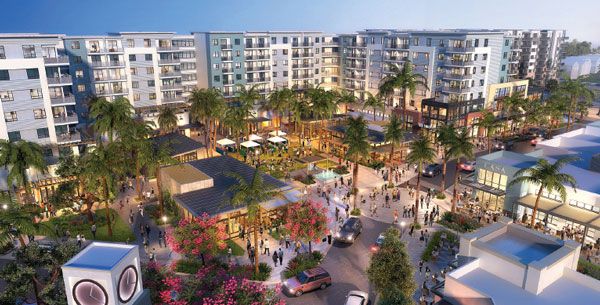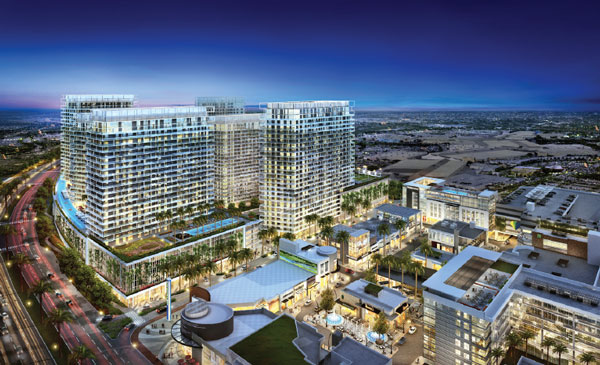From the Fall issue: While Miami, Fort Lauderdale and West Palm Beach have all enjoyed their days in the development spotlight in recent years, the municipalities in West Broward are increasingly getting their star turn. As land near the ocean is either disappearing or becoming prohibitively expensive, developers are “discovering” places like Sunrise, Plantation, Davie and Pembroke Pines.
Lou Sandora, the director of economic development for the city of Sunrise, said that 10 years ago, it was “widely accepted” that development in that part of the county had peaked.
But that has changed over the last few years. One reason for this is an influx of jobs. Jack McCabe, CEO of McCabe Research & Consulting in Deerfield Beach, told The Real Deal that West Broward is generating more jobs these days than in previous years. Now these suburbs — once bedroom communities with little to recommend them other than being pleasant and reasonably affordable — have more of what bigger cities offer in abundance. These amenities include movie theaters and restaurants, not to mention mini-downtowns and entertainment venues, some of which rival those in more centrally located cities in the region.
Pembroke Pines, one of these satellite cities and now the second-largest municipality in Broward County, had a population of approximately 169,000 in 2016, according to the U.S. Census Bureau. In recent years, it has experienced an explosion of development: Currently, the city has nine large projects in the works.
The crown jewel, so to speak, is the City Center, where the new city hall is located. The government offices are part of a four-story multi-use building housing a 3,500-seat conference center, a city commission chamber and an 11,000-square-foot, two-story contemporary arts center called the Frank C. Ortis Art Gallery and Exhibit Hall.
Terra Group is leading the development of the rest of the 100-acre City Center property, with plans to build out 47 acres of the complex. Phase I will feature roughly 325,000 square feet of retail space and a maximum of 120,000 square feet of office space. Phase II will feature approximately 400 apartments. A third phase will feature a 350-room hotel. The complex is being touted as Pembroke Pines’ new downtown.

“It is anticipated that the City Center development will be completed within the next five years, depending on leasing and sales,” Joseph Yaciuk, an administrator for the city’s Planning and Economic Development Department, told TRD.
Another large project in town, Altis Pembroke Gardens, is a 280-unit luxury apartment development going up on the west side that’s scheduled for December completion.
And joint-venture partners Core5 Industrial Partners and Helms Development broke ground last April on a $125 million, 750,000-square-foot industrial development at the site of a former women’s prison on the far western side of the city. The three-building development, dubbed the South Florida Distribution Center, will be built in phases, the first of which will involve construction of a 224,572-square-foot Class A industrial space that is scheduled for completion at the end of the year.
Farther north, the city of Sunrise is as much urban as suburban and promises to get more urban in the next few years. Joseph Kavana is developing Metropica, a 4 million-square-foot mixed-use project, in the city. At 65 acres, it’s a city within a city on the edge of the Everglades.
When completed, Metropica will have up to 485,000 square feet of retail, more than 2,200 condominiums in eight high-rise towers, up to 650,000 square feet of office space and 240 hotel rooms. The first condominium tower, now under construction, will be 27 stories high and will have 263 units. It’s scheduled for completion in the fourth quarter of 2018. In 2016, Sunrise had a population of 93,734, but Metropica will add room for as many as 10,000 new residents by the time the project is built out.
It must be noted that the retail component of Metropica is in addition to Sunrise’s Sawgrass Mills mall, an approximately 2.4 million-square-foot over-the-top shopping center and the second most popular tourist attraction in the state, according to the city of Sunrise and the Greater Fort Lauderdale Chamber of Commerce.
And if Metropica and the Sawgrass Mills mall are not enough to put Sunrise on the map, Westerra, a 32-acre mixed-use project also on the west side of town, is on the drawing board. The roughly $500 million Stiles Corporation development will have residential units, office space and some service retail, including restaurants, Sandora told TRD.

The 32-acre project named Plantation Walk will include 700 rental apartments, about 250,000 square feet of office space and another 200,000 square feet of retail space.
Meanwhile Plantation, with a population of 92,706 according to 2016 Census data, has experienced growth like that of Sunrise in the last few years. The city is seeing new development projects that will make the area more urban and pedestrian-friendly.
A $350 million redevelopment of the former Plantation Fashion Mall is underway. Alongside that, plans for the 32-acre project named Plantation Walk include 700 rental apartments, about 250,000 square feet of office space and another 200,000 square feet of retail space. Both a 160,000-square-foot office building and a 263-room Sheraton hotel on the property are undergoing renovations as well.
Further south, Davie, with a population of 101,871 in 2016, is part college town, part rural oasis. A big section of town is dedicated to four colleges and universities: Nova Southeastern University, Broward College and satellite campuses for the University of Florida and Florida Atlantic University. Approximately 65,000 students attend these four schools, according to an April report by the Sun-Sentinel.
The student population has helped spur retail development in the area, with store rents soaring especially in the past two to three years, said Orin Rosenfeld, president of Boca Raton-based Rosenfeld Realty Advisors. Today, many Davie retail tenants pay $40 to $60 per square foot; five years ago, rental rates in this market were $20 to $30 per square foot, said Rosenfeld.
A short distance from the college town part of Davie is the “other” Davie, a section of town that has retained a rural atmosphere with miles of trails, ranches with horses, hobby farms and plant nurseries. This area, is considered to be a combination of “Old Florida” and the old West.
There is a feeling that “retaining the Western theme in the town’s downtown area makes it more of a destination,” said David Quigley, director of planning and zoning for Davie. “One of the town’s mottos is ‘Downtown is not just a place for commerce.’”
